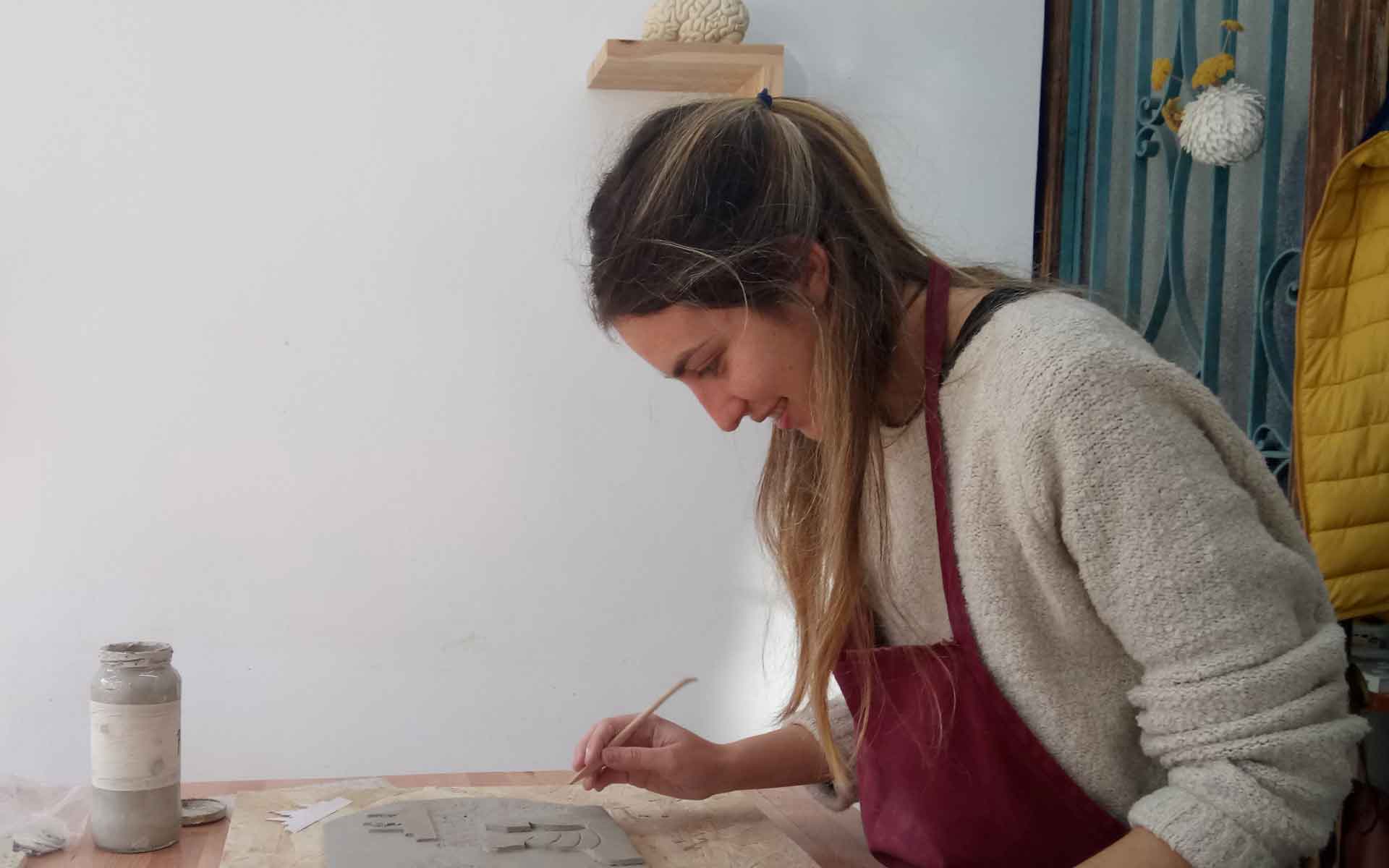
09 Oct Undertaking a master’s degree in ceramics and sculpture
Undertaking a master’s degree in ceramics and sculpture is a huge leap in the progression of an artist’s career. Studying a master’s helps artists to refine and improve their creative practise, developing their philosophies, techniques, methods and processes that help to define their unique style. Unlike many Fine Art programmes, a master’s degree in ceramics and sculpture allows students to focus their attention on the world of 3D art, working with a whole range of materials from clay, metals, wood, plastics, glass, among others, as well as specialist industry equipment to help bring their imagination to life.
Many universities require a previous undergraduate in a similar artistic subject, however it’s very common for students to enrol in a master’s degree in ceramics and sculpture after studying a totally unrelated subject. If you have demonstrable experience and an impressive portfolio, then you’ve got a good chance of gaining admission to a programme.
Undertaking a master’s degree in ceramics and sculpture or in any other creative subjects require full commitment, which is why they often take 1-2 years full time to complete. A Master of Arts programme (MA) differs from a Master of Fine Arts (MFA). The latter is more practise-led whilst an MA is academic, teaching the theory and philosophy behind art. MFA degrees typically take longer, on average two years to complete study, whilst it is common to graduate from a Master of Arts in only one. Student’s often make this decision based on how much time they can dedicate to their studies, as not everyone can afford to leave full-time employment for a whole two years. Many students supplement their education by finding a part time job that allows them to afford rent, art materials etc.
During a master’s degree, students are assigned to a tutor of whom are accomplished professionals in the chosen field. This is one of the best advantages of a master’s programme, getting guidance and support from working artists can have a great impact on a student’s career.
I think one of the most important things for emerging artists today is to be surrounded by other artists, sharing ideas, co-renting studio and venue spaces, and working together to produce exhibitions to get their work out on the scene. The popular stereotype of lonely, introverted artists that shun the chance of collaboration is constantly being proved wrong. If we glance back at some of the significant artists’ movements in art history, The Pre-Raphaelite Brotherhood, formed in 1848, was founded by seven young artists who were all inspired by Medieval works of literature. In the mid 1920s after World War I, Huge Ball and a group of artists formed the Dada movement in a night-club in Zurich. Enrolling in a master’s degree allows artists to focus on their own path, whilst encountering the magic of other artists on similar journeys.
For many artists, their first group exhibition comes from their graduate show at art school, and what better way to finish 1-2 years of really hard work, then by presenting your art to an audience! There are many opportunities for grant applications and extra funding whilst studying under a recognised institution, and this exercise of actively applying for financial and creative support can prepare you for the future of living and working as an artist.
137° Ceramics Art Studio runs an intensive 6-week summer programme starting in June 2022. The programme includes 24/7 access to the studio, 2-hours weekly classes, regular meetings with tutors, museum trips and much more! If you’re interested to discover more about the Summer Programme check our website, very soon we will announce the program and dates.
Below is a list of various master’s degrees in ceramics and sculpture across Europe and North America. All of these programmes are suitable for English language speakers.
Europe
Sculpture MA and Ceramics & Glass MA: Royal College of Art, London UK
Contemporary Applied Arts, Ceramics & Glass (Fine Arts), Jewellery and Textiles. Escola Massana, Barcelona
Ceramics MA, Plymouth college of Art, Plymouth UK
MA Design (Ceramics, Furniture & Jewellery) Central Saint Martins, UAL. London, UK
Fine Art practice (Sculpture): Glasgow School of Fine Art, UK
Ceramics (MA) University for the Creative Arts, Farnham, UK
Ceramics & Glass (MFA), Konstfack University College of Arts, Crafts and Design, Sweden
Crafts, Ceramic Art (MFA) University of Gothenburg, Sweden
Ceramics Design (MA) University of Pécs, Hungary
BA in Ceramics Skills and Design Course, The Design & Crafts Council, Ireland (A very specialiced 3 years BA course)
North America
Ceramic Art (MFA) Alfred University Alfred, New York
Ceramics (MFA) & Sculpture (MFA) Rhode Island School of Design, Rhode Island
Sculpture (MFA): Boston University College of Fine Arts, Boston
Written by Freya Saleh


